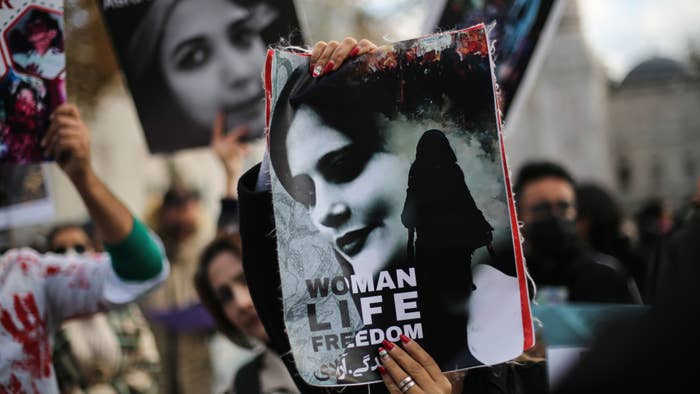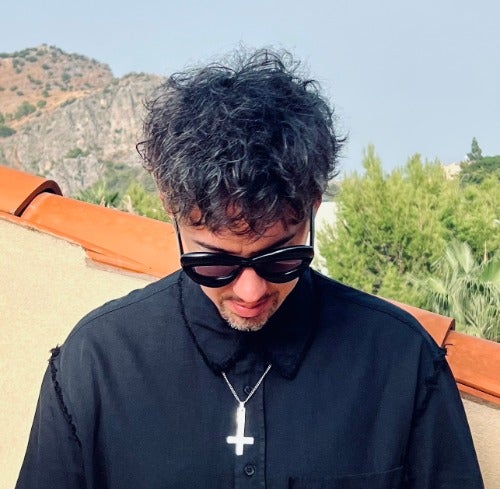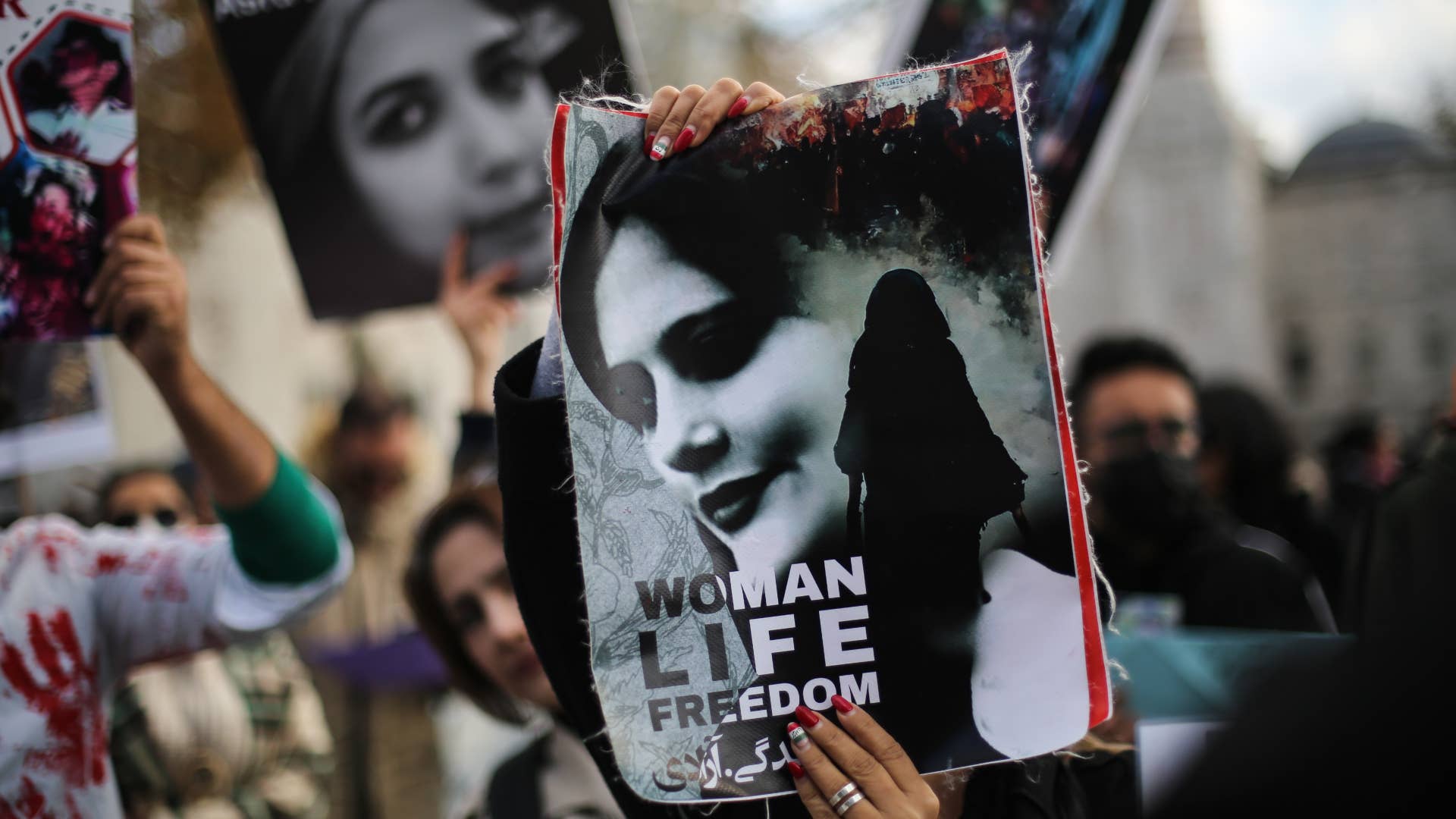
The current situation in Iran represents what’s been widely cited as the most significant and sustaining protests in the country in decades. Here in the U.S., however, coverage surrounding these developments has been criticized as glaringly inconsistent.
The phrase “Woman, Life, Freedom” has emerged as a rallying sentiment for protesters, with the slogan having notably appeared in the stands during World Cup festivities in November. More recently, Iran players initially showed solidarity by not singing along to the country’s national anthem ahead of a match against England, although they ultimately returned to doing so at a subsequent match against Wales. (A source later told CNN that families of Iran players had been threatened).
Amid continued updates on the protests, we’ve put together a breakdown of what you need to know regarding the movement, starting with the widely criticized death of 22-year-old Mahsa Amini.
On Sept. 16 of this year, just days after her initial arrest, 22-year-old Mahsa Amini died in a hospital under circumstances many have questioned as suspicious.
Family members, including cousin Erfan Mortezaei, said she was “tortured” upon her arrest. As for the reason for her initial detainment, she was reported to have been accused of not properly wearing hijab.
“She was tortured in the van after her arrest, then tortured at the police station for half an hour, then hit on her head and she collapsed,” Mortezaei said in a recent CBS Mornings interview, as seen below.
In a call to action issued in September, Amnesty International noted that officials in Tehran initially said that Amini died as a result of a heart attack “without providing any evidence.” As a result, the organization has called for an independent criminal investigation.
The suspicious death was first met with protests in Iran before such efforts were further supported elsewhere by those who wished to show solidarity, including here in the U.S.
In early November, for example, hundreds of protesters took to Washington Square Park to show their support while also highlighting the violence protesters in Iran have been reported to have been met with in recent months. Robert Riggs, an organizer involved with the Woman Life Freedom NYC group, told NYU’s independent student paper that Iran was “waging war” on its own people.
While groups including Human Rights Watch have pointed to investigations into the deaths of 434 people in connection with the protests in multiple cities in Iran, including the reported deaths of dozens of children, the Associated Press reported in late November that Iranian general Amir Ali Hajizadeh had claimed a lower estimate.
The aforementioned demonstrations that took place amid World Cup festivities, meanwhile, were reported to have been met in some cases by harassment.
The actions of Iran’s Guidance Patrol, widely referred to as “morality police,” have received renewed global scrutiny in recent months following Amini’s death in their custody. As the colloquial name for such forces suggests, the “morality” aspect of such officers—as Cambridge professor and researcher Roxane Farmanfarmaian recently detailed to NPR—is “completely focused on women.”
Speaking further, Farmanfarmaian pointed out in September how the “variability” of morality police’s impact in Iran is determined by who’s in power at any given time (Iran’s current president is Ebrahim Raisi).
“What the women face are fines,” Farmanfarmaian told NPR. “They could receive lashes—up to 74 lashes. And although it’s illegal, often they also suffer beatings or knife attacks or even acid thrown at them by officials and by bystanders.”
In recent months, both the U.S. and the European Union have announced sanctions against Iran’s morality police in connection with Amini’s death and their subsequent response to protests.
“Mahsa Amini was a courageous woman whose death in Morality Police custody was yet another act of brutality by the Iranian regime’s security forces against its own people,” Janet Yellen, Secretary of the Treasury, said in September when announcing sanctions against the organization, as well as leaders of other security forces in the country.
In October, a White House meeting was held with Iranian activists and human rights experts. The meeting, per a White House-issued statement at the time, saw those involved discussing (among other things) “the diplomatic and economic tools the United States is pursuing to support Iranian protesters.”
One month later, Vice President Kamala Harris shared an extended statement on the U.S.’ push to remove Iran from the United Nations Commission on the Status of Women.
“Iran has demonstrated through its denial of women’s rights and brutal crackdown on its own people that it is unfit to serve on this Commission,” Harris said.
Of course, it’s always worth noting amid discussions of this variety that it’s crucial to never accept what the U.S. says at face value without seeking out further context, particularly in the foreign policy realm (One should also be wary of widely circulated false claims).
The U.S. and Iran, specifically, have long had a contentious relationship, including criticized actions on the part of the former. Predictably, the U.S. has quite notably meddled in Iranian affairs in the past, including Operation Ajax in 1953. The operation saw the CIA and the U.K.’s MI6 riling up dissent with the ultimate result being an overthrow of the democratically elected Persian administration at the time. Decades later, the Iranian Revolution took place. There was also of course the Iran hostage crisis that occurred from Nov 4, 1979 – Jan 20, 1981 in which several U.S. diplomats and citizens were held at the United States embassy in Tehran, an incident that was related to the aforementioned coup and the reign of Reza Shah Pahlavi. For example, the hostage takers demanded that the United States return the Shah, who fled to the country for cancer treatment after being overthrown, so he could stand trial. The U.S. refused.
In short, particularly in connection with the aforementioned mention of meddling from the U.S. and others, western publications and leaders have been accused by Iranian officials of exploiting current issues to further inspire division.
Days after Amini’s death, for example, Iran’s Foreign Minister Hossein Amirabdollahian cautioned against playing “to the emotions of the Iranian people.” Speaking during an interview on NPR’s Morning Edition, Amirabdollahian also criticized the U.S., specifically, in connection with then-current talks of internet restrictions in the region.
“If the United States really, really cares about the Iranian people it can pay attention to the fact that thousands of Iranian kids have died because of sanctions that it has imposed,” Amirabdollahian said at the time.
Meanwhile, officials in Iran have maintained a strict stance against protests. In early November, for example, a letter from 227 members of Iran’s Parliament called for “no leniency” to be shown when it came to punishing those participating in the protests.






